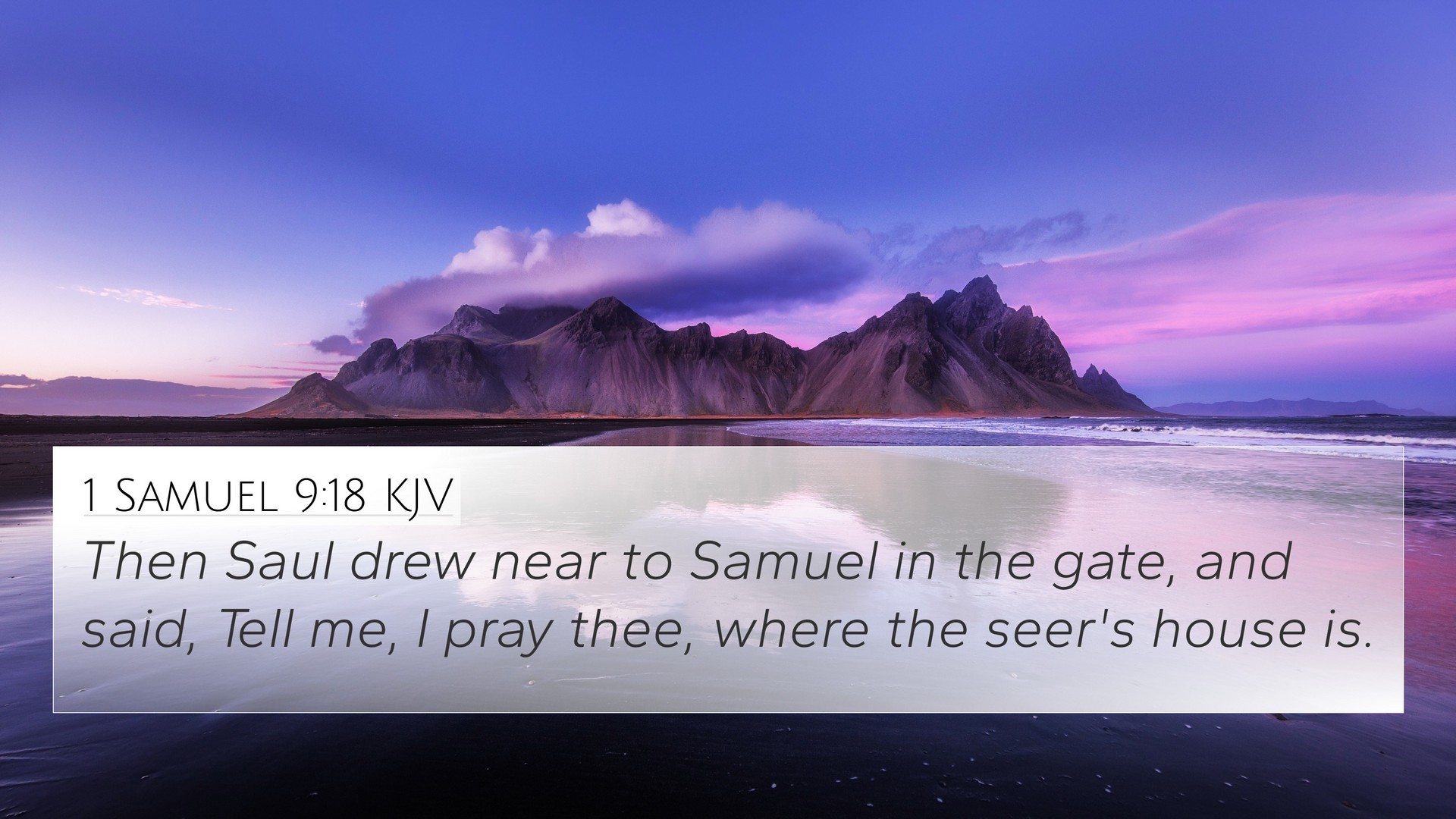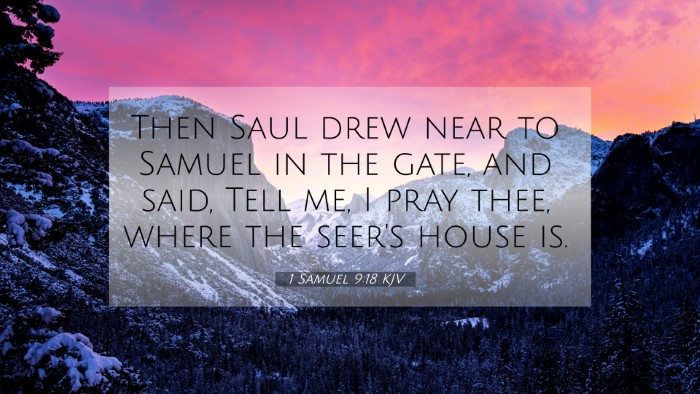Interpretation of 1 Samuel 9:18
The verse 1 Samuel 9:18 states:
"Then Saul drew near to Samuel in the gate, and said, 'Tell me, I pray thee, where the seer’s house is.'"
This moment in Scripture highlights a critical juncture in the narrative of Saul, who is seeking guidance that will ultimately lead him to his appointment as king of Israel.
The significance of this verse can be understood through various commentaries, including insights from Matthew Henry, Albert Barnes, and Adam Clarke, which provide depth to the understanding of Saul's actions and the cultural context of his inquiry.
Context and Analysis
In the backdrop of Israel's transition from judges to monarchy, Saul's encounter with Samuel is laden with theological and social implications. His act of seeking out Samuel, referred to as the "seer," demonstrates both his openness to divine guidance and his personal quest for direction.
Insights from Matthew Henry
Matthew Henry emphasizes that Saul's approach to Samuel reflects humility and a recognition of the prophet's authority. In his commentary, he notes that Saul’s search for the seer points to a deeper need for divine assistance in his life, setting the stage for the significant role that Saul would play in Israel’s history.
Insights from Albert Barnes
Albert Barnes adds that Saul's question illuminates the transition in leadership in Israel, indicating that the seer was crucial in the establishment of God’s plans. He points out that this not only reflects Saul’s public posture as a seeker of wisdom but also illustrates the divine orchestration at play, aligning Saul with God's purpose.
Insights from Adam Clarke
Adam Clarke provides a linguistic perspective, discussing the term "seer" and its significance in ancient Israel. He notes that this term was used for prophets who had the God-given ability to perceive beyond the physical realm, thus representing a direct link to the divine. Clarke's analysis underscores the importance of prophetic visions in guiding Israel during tumultuous times.
Thematic Connections
This verse also intersects with various themes throughout the Bible. Here are notable connections and cross-references, which help illuminate the richness of Scriptural interconnectedness:
- Deuteronomy 18:15-18 - The promise of a prophet like Moses who would speak God’s words.
- 1 Samuel 3:20 - Samuel is recognized as a prophet for all of Israel.
- 1 Samuel 10:1 - The anointing of Saul as king occurs right after this encounter.
- Proverbs 3:5-6 - Trusting in the Lord, which relates to Saul’s searching for divine guidance.
- 1 Chronicles 10:13-14 - Reflects on the consequences of Saul’s actions and God’s rejection of him.
- Acts 10:14-16 - The concept of divine revelation and understanding through prophetic means.
- Luke 1:76 - This verse resonates with the prophetic tradition carried forth in the New Testament.
Cross-Referencing Biblical Texts
The thematic connections underline the importance of cross-referencing biblical texts. This enriches one’s understanding of individual verses and shows how they relate to the overarching narrative of Scripture.
Tools for Bible Cross-Referencing
To enhance the study, numerous tools such as a bible concordance, bible cross-reference guide, and other bible reference resources are invaluable for identifying connections between verses, themes, and the development of scriptural principles.
Conclusion
In summary, 1 Samuel 9:18 serves not just as a historical account but as a lesson in dependence on divine guidance and the acknowledgement of prophetic voices in our lives. By utilizing methods of cross-referencing Bible study, we can deepen our understanding of this and other verses, revealing inter-Biblical dialogues and the profound thematic connections that bind the Scriptures together.


